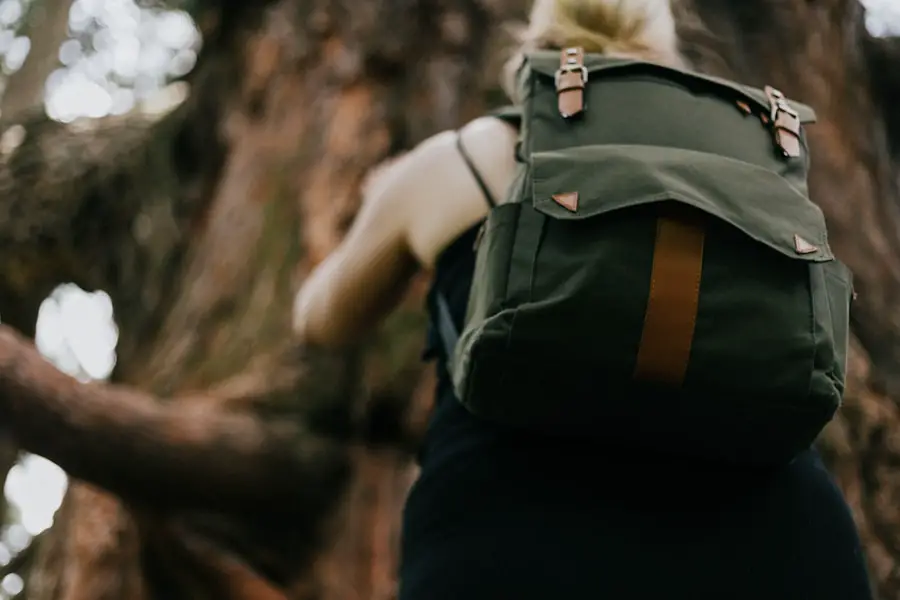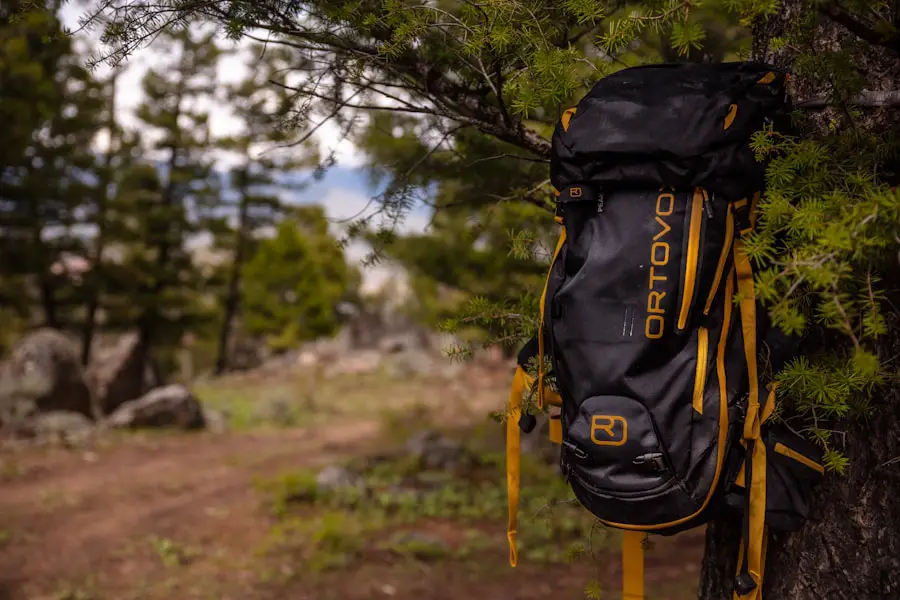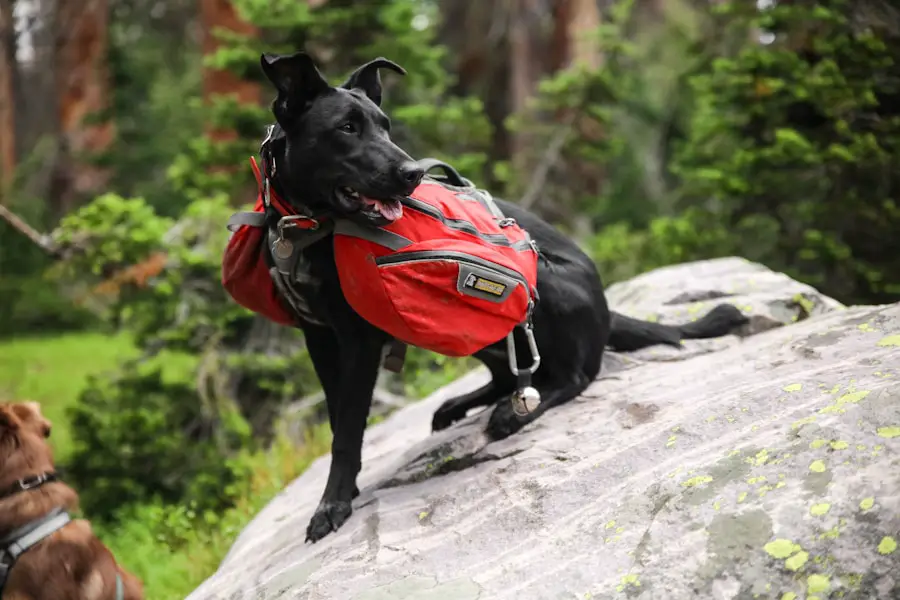When embarking on a hiking adventure, the first step is to thoroughly understand your specific needs. This involves considering the type of hiking you plan to undertake, the duration of your trips, and the environment in which you will be hiking. For instance, a day hike in a local park will require different gear than a multi-day trek through rugged mountain terrain.
Identifying whether you will be carrying just the essentials for a short jaunt or a more extensive load for an extended journey is crucial in determining the right backpack for your needs. Additionally, your personal preferences play a significant role in shaping your hiking requirements. Some hikers prioritize lightweight gear for speed and agility, while others may prefer a more robust setup that allows for additional comfort and storage.
Understanding whether you lean towards minimalist hiking or if you enjoy bringing along extra gear for comfort can help narrow down your options. Furthermore, consider the climate and weather conditions you are likely to encounter. A waterproof backpack may be essential for wet environments, while a ventilated design might be more suitable for hot, humid conditions.
Key Takeaways
- Understand your hiking needs before choosing a backpack
- Determine the right capacity based on the length and type of your hikes
- Consider your body size and shape when selecting a backpack
- Evaluate the features and compartments that will best suit your needs
- Try on different sizes and brands to find the best fit for you
Determining the Right Capacity
Once you have a clear understanding of your hiking needs, the next step is to determine the right capacity for your backpack. Backpack capacities are typically measured in liters, and they can range from small daypacks of around 15-30 liters to larger backpacks that can hold upwards of 70 liters or more. The capacity you choose should align with the length of your hikes and the amount of gear you plan to carry.
For example, a day hike may only require a 20-liter pack to hold water, snacks, and a first-aid kit, while a weekend camping trip might necessitate a 50-liter pack to accommodate a sleeping bag, tent, and cooking supplies. It’s also important to consider how much gear you typically carry. If you tend to pack light and only bring the essentials, a smaller capacity may suffice.
Conversely, if you prefer to have extra layers, cooking equipment, or other comforts on hand, opting for a larger capacity will provide the necessary space. Additionally, think about how you might want to expand your load in the future. If you plan to take on longer hikes or more challenging terrains that require additional gear, investing in a larger backpack now could save you from needing to purchase another one later.
Considering Your Body Size and Shape

Your body size and shape are critical factors when selecting a backpack that will provide comfort and support during your hikes. Backpacks come in various sizes—small, medium, large—and are often designed with specific torso lengths in mind. A proper fit is essential not only for comfort but also for preventing injuries during long treks.
To find the right size, measure your torso length from the base of your neck to the top of your hip bones. This measurement will guide you in selecting a backpack that aligns with your body’s proportions. Moreover, consider your body shape when choosing a backpack.
Some packs are designed with specific features to accommodate different body types, such as curvier or straighter builds. For instance, women’s backpacks often have shorter torso lengths and narrower shoulder straps to better fit female anatomy. Similarly, some brands offer unisex designs that cater to a broader range of body shapes.
Trying on various models can help you identify which design feels most comfortable against your back and hips.
Evaluating the Features and Compartments
| Feature/Compartment | Performance | Customer Satisfaction | Cost |
|---|---|---|---|
| Feature A | 85% | 4.5/5 | 1000 |
| Feature B | 92% | 4.8/5 | 1500 |
| Compartment X | 78% | 4.2/5 | 800 |
| Compartment Y | 88% | 4.6/5 | 1200 |
The features and compartments of a backpack can significantly enhance your hiking experience by providing organization and accessibility to your gear. When evaluating potential backpacks, consider what features are most important to you based on your hiking style. For example, if you frequently hike in inclement weather, look for packs with waterproof materials or rain covers.
If you enjoy photography or need quick access to specific items like snacks or maps, consider backpacks with front pockets or side compartments that allow for easy retrieval without having to dig through the main compartment. Additionally, think about the internal organization of the backpack. Some models come equipped with hydration reservoirs or sleeves for water bladders, which can be particularly useful for staying hydrated on long hikes.
Others may feature multiple compartments for organizing gear such as clothing, cooking supplies, or first-aid kits. A well-organized pack can save time and frustration on the trail by allowing you to find what you need quickly without rummaging through everything.
Trying on Different Sizes and Brands
Once you have narrowed down your options based on capacity and features, it’s time to try on different sizes and brands of backpacks. Each manufacturer has its own sizing standards and design philosophies, which means that a medium pack from one brand may fit differently than a medium pack from another. Visiting an outdoor retailer where you can physically try on various models is invaluable.
Pay attention to how each pack feels when worn; it should sit comfortably against your back without causing pressure points. When trying on backpacks, load them with weight similar to what you would carry on a hike. This will give you a better sense of how the pack distributes weight across your body and whether it feels balanced when loaded.
Adjust all straps—shoulder straps, hip belts, and load lifters—to ensure a snug fit that allows for movement without being restrictive. Don’t hesitate to ask staff for assistance; they can provide insights into which packs are best suited for your body type and hiking style.
Testing the Comfort and Fit

Comfort is paramount when selecting a hiking backpack since it can make or break your outdoor experience. After trying on different sizes and brands, take the time to assess how each pack feels during movement. Walk around the store or even take a short hike with the loaded pack if possible.
Pay attention to how the weight is distributed across your shoulders and hips; ideally, most of the weight should rest on your hips rather than pulling down on your shoulders. Additionally, consider how well the pack conforms to your body as you move. A well-fitted backpack should allow for natural movement without shifting excessively or causing chafing against your skin or clothing.
Look for features like padded shoulder straps and hip belts that provide cushioning while also offering adjustability for a personalized fit.
If possible, wear the pack for an extended period during your testing phase; this will help reveal any discomfort that may arise over time.Factoring in the Weight Distribution
Weight distribution is an often-overlooked aspect of selecting a hiking backpack but is crucial for maintaining balance and reducing fatigue during long hikes. A well-designed backpack should allow you to carry weight efficiently by placing heavier items close to your back and lighter items further away from your body. This positioning helps maintain stability and reduces strain on your muscles and joints.
When evaluating potential backpacks, look for features that enhance weight distribution, such as adjustable load lifters that pull the top of the pack closer to your body or hip belts that transfer weight from your shoulders to your hips. Some packs also come with multiple attachment points for gear like trekking poles or sleeping bags, allowing you to customize how weight is carried based on your specific needs. Understanding how weight distribution affects your comfort can help you make an informed decision when selecting the right backpack.
Making the Final Decision
After considering all these factors—your hiking needs, capacity requirements, body size and shape, features and compartments, comfort and fit, as well as weight distribution—you are now equipped to make an informed decision about which backpack is right for you. It’s essential to take your time during this process; rushing into a purchase could lead to discomfort or dissatisfaction on the trail. Before finalizing your choice, it may be beneficial to read reviews from other hikers who have used the models you are considering.
Their experiences can provide valuable insights into durability and performance in real-world conditions. Additionally, if possible, test out your chosen backpack on shorter hikes before committing to longer excursions; this will allow you to assess its performance under actual hiking conditions while still giving you time to make adjustments if necessary. Ultimately, selecting the right backpack is about finding one that aligns with your unique needs and enhances your overall hiking experience.
When determining what size hiking backpack you need, it’s important to consider the length of your trip and the amount of gear you’ll be carrying. If you’re planning a multi-day hiking adventure, you’ll likely need a larger backpack to accommodate all your essentials. For more information on essential camping gear, check out this article on solar-powered camping lanterns to ensure you’re well-prepared for your outdoor excursion.
FAQs
What factors should I consider when choosing the size of a hiking backpack?
When choosing the size of a hiking backpack, consider the duration of your hike, the amount of gear and supplies you need to carry, and your own physical size and strength.
What are the different sizes of hiking backpacks available?
Hiking backpacks are typically categorized by volume capacity, ranging from small daypacks (under 20 liters) to medium-sized packs (20-50 liters) for overnight trips, and large packs (50+ liters) for multi-day hikes or backpacking trips.
How do I determine the right size of hiking backpack for my needs?
To determine the right size of hiking backpack, consider the length of your hike, the amount of gear and supplies you need to carry, and your own physical size and strength. It’s also helpful to try on different sizes and styles to find the best fit for your body.
What are the consequences of choosing the wrong size hiking backpack?
Choosing the wrong size hiking backpack can lead to discomfort, strain, and potential injury. An oversized pack may cause imbalance and strain on your back, while an undersized pack may not be able to accommodate all your gear and supplies.
Are there any general guidelines for choosing the right size hiking backpack?
A general guideline for choosing the right size hiking backpack is to consider the duration of your hike and the amount of gear you need to carry. For day hikes, a small to medium-sized pack is usually sufficient, while overnight or multi-day hikes may require a larger pack.
